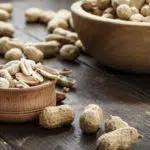Although it is not as well known as St. Patrick’s Day or Women’s History Month, March bears another significant honor — National Flour Month. When it comes to cooking or baking, flour is a principal ingredient in many food options all around the world. It is necessary for baking bread, cakes, crackers, pasta, pastries, breading for meats, and much, much more. Think of it this way: we would find it pretty hard to make a cake or muffin without flour, and what would breakfast be like without toast, donuts, or other delectable breakfast items? So, in honor of this crucial baking ingredient, here are a few essential details to understand a little more about flour.
National Flour Month timeline
Using understanding of chemistry and yeast biology, this process shortens the time it takes for bread to ferment. However, the process also removes important nutrients and flavorings from the bread. This process is used at most large factories now.
Otto Frederick Rohwedder invented a machine that sliced bread in advance of selling, but bakeries didn't buy it until 1928, when Rohwedder allowed it to both slice and wrap bread.
Named after the 4th Earl of Sandwich, John Montagu, the first sandwich was invented when the Earl did not want to interrupt a game he was playing and asked that his roast beef meal be placed between two cut slices of bread.
Ancient humans discover the use of yeast for raising bread into leavened loaves.
National Flour Month Activities
Explore the Different Types of Flour
Over the years, flour has been broken down into several types based on the different proportion of starches, polysaccharides, proteins, grains, and other factors. Corn, legumes, nuts, or rice make the majority of flour options on the market today. However, there are some flour alternatives made from fruits and vegetables. While there are a wide variety of flour options available, the most commonly used baking flours types include (but are not limited to): All-Purpose Flour, Bleached Flour, Bread Flour, Cake Flour, Enriched Flour, Gluten Flour, Gluten-Free Flour, Hard Flour, Pastry Flour, Self-Rising Flour, Unbleached Flour, Wheat Flour, and much more!
Learn About How Flour is Made
No matter what type of flour you plan to use, it all starts out the same — as whole grain. Whole grains used for flour are broken down into three parts: bran, endosperm, and germ. Once the grains are selected, they are milled down into flour. Since whole grains still use all three portions of the original grain, this is where the process stops for whole grain flour—both enriched white flour and white grain flour require additional processing to rid the coarse bran and germ from the flour. Eliminating the bran and germ from the flour also removes many of the nutrients and vitamins (such as vitamin B, folic acid, niacin, riboflavin, thiamin, and more)—which can be added back in during the enrichment process for enriched flour.
Bake Something New
One of the best ways you can celebrate National Flour Month is to try something new. Making whole grain sourdough bread is surprisingly easy, and once you have the basics down, you can make loaf after loaf in no time. Cookies baked at home are twice as delicious and half the price of store-bought, pre-made cookies. Try your hand at making your own unique recipe, adding your favorite candies and flavorings to a basic, from-scratch cookie dough!
Why We Love National Flour Month
Getting Flour is Easy Now
Thankfully, unlike our predecessors, the everyday person no longer needs to grind down the grains into powder ourselves. We can just run to the supermarket to get this fantastic cooking component so we can bake to our heart’s content.
Flour Has a Place in Ancient History
Can you believe flour has been around since the beginning of human civilization? It all started when our ancestors figured out if they broke grass seeds up into powder, then they could use the powder to make hard cakes by baking it over a fire. However, it wasn’t until 3,000 BC that our ancestors figured out how to use grains and yeast to create softer loaves by utilizing the heat from the sun to ferment the dough.
Flour is a Versatile Super Ingredient
From breads to pastries, cookies to pies, and so much more, baking with flour opens up a world of possibilities! You can make a pizza for your family or some homemade bagels to delight your guests! The possibilities are endless with a little bit of creativity, an oven, and some flour.
National Flour Month dates
| Year | Date | Day |
|---|---|---|
| 2026 | March 1 | Sunday |
| 2027 | March 1 | Monday |
| 2028 | March 1 | Wednesday |
| 2029 | March 1 | Thursday |
| 2030 | March 1 | Friday |














































































































































